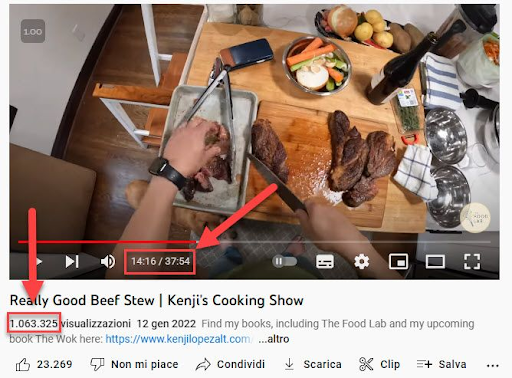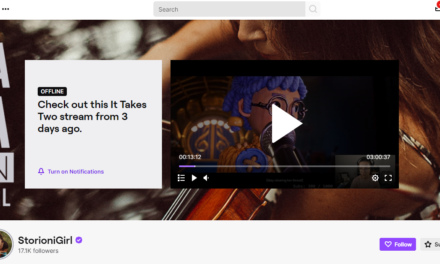My son is 3. One minute after we start drawing together, he’s inquiring about the lawn mower outside (he loves loud equipment, you know).
Nowadays, everyone has the attention span of my son, or at least that’s what people say. Short posts on social feeds and videos 60 seconds or less thrive. It’s a self-reinforcing cycle.
Online experts decry: “Long-form content is dead! No one will read your 1,500-word posts or watch your 20-minute videos anymore.”
Since I began publishing online in 2010, I’ve seen too many premature obituaries for long-form content. I also see long-form success stories like this almost 40-minute YouTube video about cooking good stew with over 1M views.

Every format has its place. TV didn’t replace radio. Video didn’t kill audio. And short-form content isn’t the end of long-format content.
In fact, short-form content is a powerful tool for long-form creators. It helps refine ideas, leads to better content, and limits risk. Here’s how.
Short-form content isn't the death of long-form content. On the contrary, it's a powerful tool for long-form creators, says @MrCabasVidani. Share on XData-driven content creation
Prolific and successful online writer Nicolas Cole uses the term “data-driven writing.” He suggests publishing short content frequently to collect a large sample of data. The short content acts as a focus group to identify if topics and ideas work before investing hours in them.
@NicolasCole77 uses the term data-driven writing. Publish short content frequently to collect a large sample of data. #CreatorEconomy Share on XHis strategy wrecks the image of creators in the last century who worked for weeks, months even. They planned carefully, listened to their muse, may be discussed their idea with an inner circle of enlightened geniuses. Finally, they delivered a content baby and waited for a standing ovation. They took a huge risk and wasted a lot of time and energy when they failed.
As a content entrepreneur, you need to allocate your resources wisely. And time is the most precious.
How to be a data-driven content entrepreneur
But how does this work in practice? Is it feasible?
Let me lay out the process. It’s applicable to every kind of content. Even better, you can mix and match audio, text, and video. Choose the combination that optimizes your time.
1. Collect ideas
At the foundation of any good content business is a system to collect and review ideas quickly. Jot down ideas when they arise. Include enough detail so you can flesh them out later. Note why they’re interesting, what inspired them, and possible substeps or subpoints.
2. Find the core and express it briefly
I’m guilty of over outlining. Give me the tiniest idea, and I build a coherent outline for a book in an hour. (It’s not a talent; it’s a nightmare. Many creators suffer from this. Maybe I’ll start an “outliners anonymous” group one day.)
But to test your idea through short-form content, you need to synthesize it. Platforms such as TikTok and Twitter require this skill. You are forced to learn to pack real value in the least amount of words (or images) possible.
Strip down the idea of every subitem. Describe it in a word-counter app, directly in the Twitter editor, or tell it to your TikTok recording app with an eye on the timer.
Read it out loud (or watch the recording) and listen to your feelings: Does it spark curiosity, surprise, or a realization?
3. Publish
You need to test your synthesized core idea. First, not all channels work as well for this. The best ones are:
- Twitter (tweets, not threads)
- LinkedIn posts (with a self-imposed Twitter-ish character limit)
- Instagram captions
- YouTube Shorts,
- Instagram Reels
- TikTok videos for one minute or less
- Large on-topic communities, such as Reddit channels, Facebook Groups, Discord servers, etc.
You also can experiment with content ideas in your newsletter or free and paid communities. If they have good engagement, they likely will provide better data on the idea.
But if you are just starting, those are not viable options.
On Twitter, LinkedIn, and Instagram (Reels are an exception), without a sizeable audience, you publish into the void. It’s hard to collect enough feedback.
Camouflage your short content: Publish them as replies to the posts on larger channels as long as they are on topic.
On short-video platforms, you can publish into the void, and through its AI-driven suggestion engines, your content may gain enough traffic for helpful feedback.
4. Keep publishing
Don’t expect every short-content experiment to be a home run. You’ll likely need tens of posts – many of them around the same idea – until a couple of them get enough engagement to indicate strong potential for long-form versions. Be patient.
Test potential long-form content ideas by publishing short-form content on the topic, advises @MrCabasVidani. #ContentEntrepreneur Share on X5. Encourage replies
Your goal is to know what people think of your idea. Don’t drop the short-form content like it’s the divine truth. Share it as a personal discovery to increase engagement. If it makes sense, integrate a question into your content.
6. Collect data
Every data point counts – reads, views, shares, replies, messages, and so on. After some weeks of daily experiments, a baseline will emerge. You’ll also notice outliers – short-form content that performed a bit better. Analyze those and identify possible reasons for their success: Is it the topic? The language? The format?
7. Iterate
When you have a potential short-form winner, you can:
- Refine and repost it.
- Expand with other short-form posts on the topic – like episodes of a TV show.
- Combine several ideas in a longer form.
- Go to the next longer step – from tweet to thread to short video to article to ebook.
- Dismiss what didn’t work.
Will you use short-form content?
I recently started tweeting in English and publishing YouTube Shorts in Italian. I still don’t have significant results. But knowing I have a platform to test my ideas without a huge investment lightens the burden on every single piece of content.
Are you already doing short-form content tests? How’s it going? Let me know on Twitter and tag @TheTiltNews.
About the author
Alberto has been a content entrepreneur since 2010, writing posts, producing videos and podcasts, and selling ebooks, courses, and services. Now he helps content creators become consistent through coaching at https://www.coach.me/albertocabasvidani.










